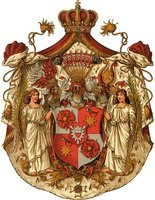Categories Online-Shop Germany German States until 1871 Lippe
Lippe

The history of the rulers of the Lippe can be traced back to the beginning of the 12th century. The family was named after their headquarters on the upper reaches of the river of the same name. The brothers Bernhard I and Hermann I "de Lippia" were the first known representatives of the house. The son of Hermann - Bernhard II - became ruler of the area after the death of his father in 1167 and knew how to expand it steadily through skillful political action. In 1185 he founded the city of Lippstadt and 1192 Lemgo. Both cities should remain the most important in the country until the end of the territory as an independent country in 1946.
Simon V (1511-1536) was demonstrably the first count of Lippe, although an official appointment by the emperor probably did not take place. Although a devout Catholic, he could not prevent Lippe from becoming Lutheran at this time. In the 17th century, the house split into several secondary lines like Schaumburg-Lippe (from 1647). Count Georg Wilhelm (1784-1860) joined the Confederation of the Rhine in 1807 and was thus factually elevated to the rank of prince. In 1815 Lippe joined the German Confederation and became part of the German Reich after 1871.
In Lippe, the rulers struck almost only pennies until the 14th century, also in imitation of the coins from the neighboring areas. After this phase a host of silver and gold coins from "foreign countries" (such as Hesse and Thuringia, but also France or the Netherlands) flooded the area and its own production collapsed. In order to ensure a certain comparability of the denominations, the cities stamped the foreign coins with countermarks. This phase lasted until the beginning of the 16th century. After that, especially copper pennies are coined. Towards the end of the 17th century thalers were also made.


